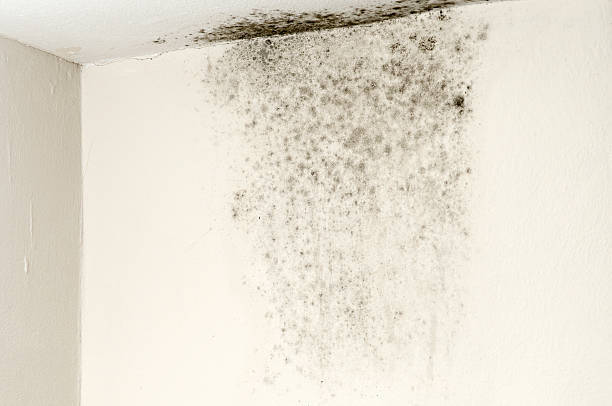
Brita filters are popular for providing clean, great-tasting drinking water, but like any water filtration system, they require proper maintenance to work effectively. One concern that often arises is whether mold can grow in a Brita filter and, more importantly, if that mold can make you sick. At Tulsi Wellness Club, we believe that a healthy lifestyle begins with clean, pure water, so let’s explore this important topic.
Can Mold Grow in a Brita Filter?
Yes, mold can grow in a Brita filter or in the water reservoir if not properly cleaned and maintained. Mold thrives in damp, dark environments—exactly the conditions present in a water filter that isn’t regularly cleaned or changed. Over time, organic matter and minerals can accumulate in the filter, creating a breeding ground for mold, bacteria, and other microorganisms.
How Does Mold Form in a Brita?
Several factors contribute to mold growth in a Brita filter system:
- Moisture: Since Brita filters are constantly exposed to water, they remain moist, which creates the perfect conditions for mold to flourish.
- Neglected Cleaning: If the filter or pitcher isn’t cleaned regularly, residual water can sit in the pitcher for long periods, encouraging mold growth.
- Filter Overuse: When filters aren’t replaced on schedule, they lose their ability to effectively trap contaminants and may become clogged with organic material, which can lead to mold growth.
- Improper Storage: Storing the Brita filter or pitcher in a warm area, rather than in the refrigerator or a cool, dry place, can exacerbate mold growth.
Can Mold in a Brita Filter Make You Sick?
Mold exposure from any source, including a contaminated Brita filter, can pose health risks. The severity of these risks depends on the individual’s sensitivity to mold and the level of exposure. For some, mold exposure may cause mild symptoms, while for others, it can lead to more serious health issues.
Common Symptoms of Mold Exposure
- Respiratory Issues: Mold spores can irritate the lungs and airways, leading to coughing, wheezing, and shortness of breath. For those with asthma or allergies, mold exposure can worsen symptoms.
- Allergic Reactions: Mold can trigger allergic reactions, including sneezing, runny nose, itchy eyes, and skin rashes.
- Digestive Problems: Ingesting mold-contaminated water may lead to nausea, vomiting, and digestive upset.
- Fatigue and Brain Fog: Prolonged exposure to mold can affect the body’s immune response, leading to fatigue, headaches, and cognitive issues like brain fog.
- Weakened Immune System: Mold can challenge the immune system, especially in people who are immunocompromised, making them more susceptible to infections and illnesses.
At Tulsi Wellness Club, we emphasize the importance of paying attention to these subtle signs of mold exposure, especially if you’re consuming water that could be contaminated. If you experience any of these symptoms after using your Brita filter, it may be time to inspect and clean your system.
Preventing Mold in Your Brita Filter
Maintaining your Brita filter properly is crucial to ensuring that the water you drink remains clean and safe. Here are some tips to help prevent mold growth in your water filter:
- Regular Cleaning: Clean the pitcher or reservoir once a week with warm water and mild soap. Pay extra attention to the lid and spout, as these areas can harbor mold.
- Filter Replacement: Replace the filter according to the manufacturer’s instructions. Typically, this is every two to three months, but it may vary depending on how often you use the filter.
- Store in the Refrigerator: Mold grows more slowly in cooler environments. Storing your Brita filter pitcher in the refrigerator reduces the chances of mold growth.
- Keep the Filter Dry: If you’re not using the filter for an extended period, empty the pitcher and allow it to dry completely before storing it.
- Inspect for Mold Regularly: Check the filter and the inside of the pitcher periodically for any signs of mold, including discoloration, an unusual smell, or visible growth.
What to Do If You Find Mold in Your Brita Filter
If you discover mold in your Brita filter or pitcher, here’s what you can do:
- Stop Using the Filter Immediately: Do not continue using the filter if you suspect it’s contaminated with mold.
- Thoroughly Clean the Pitcher: Disassemble the pitcher and clean all parts with warm, soapy water. You may also use a mixture of water and white vinegar or a hydrogen peroxide solution to ensure deep cleaning.
- Replace the Filter: Discard the old filter and replace it with a new one. Be sure to follow the installation instructions to ensure it functions properly.
- Consult a Health Professional: If you have been experiencing any symptoms of mold exposure, it’s wise to consult a health professional. Mold toxicity can have a significant impact on health, particularly for those with underlying health conditions or mold sensitivities.
Conclusion
At Tulsi Wellness Club, we understand how essential it is to drink clean, pure water for optimal health. While Brita filters are an excellent tool for reducing contaminants in your drinking water, they must be regularly maintained to prevent mold growth. Mold in your water can make you sick, especially if left unchecked, but with proper care and cleaning, you can ensure your Brita filter continues to provide safe, clean water for your household.
If you’re concerned about mold exposure or want to learn more about the importance of clean water for your health, feel free to reach out to us. Our wellness experts are here to guide you on your journey to a healthier, mold-free lifestyle.
Dr. Christian Jacob Del Rosario
Contact Me


